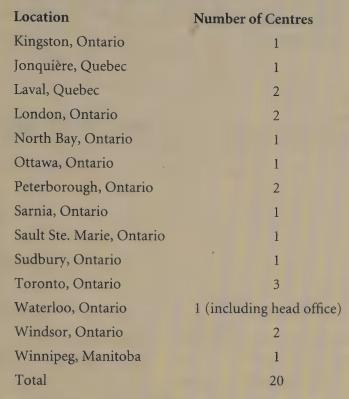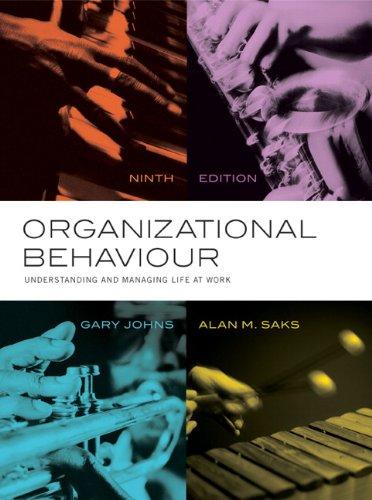Sally Newton was the only purchasing officer of First Canadian Club, a fitness club with 20 centres
Question:
Sally Newton was the only purchasing officer of First Canadian Club, a fitness club with 20 centres scattered around Canada. In February 1988, she was thinking of how to handle the resistance coming from some centre managers, especially the “alliance” of three Toronto centres, to the newly introduced centralized purchasing system designed by her one month earlier.
First Canadian Club was founded in 1979 and owned by Mr. Jim Stewart, a business administration graduate from the University of Western Ontario. At the age of 25, he opened his first fitness centre in Toronto, Ontario. Over the past 10 years, the club had been growing gradually, and in 1988, it had 20 centres scattered around Canada. The head office, however, remained in Waterloo.

Sally Newton was 24. Right after earning a diploma in psychology from Fanshawe College, London, Ontario, she joined First Canadian Club in January 1988 as the purchasing officer of the club. Her job responsibilities included the administration of purchasing and inventory control. Before her college studies, she had a number of years of work experience in various areas but none of them specifically related to purchasing or inventory control. As she said herself, “This is my first job in this area.”
“If there was really a purchasing system in the First Canadian Club before Sally came, I could only say it was a very, very loose one,” one staff member commented. First Canadian Club needed many different kinds of items to keep its centres running. They ranged from parts for machines and equipment like bike parts and suntan bulbs to stationery supplies and toiletries.
Before Sally joined the club, each centre was responsible for its own purchasing. Most centres did not keep any inventory and purchased items on an ad hoc basis (i.e., buy when needed at a nearby store). In the head office, there was a part-time employee also doing the purchasing and inventory control job but only for the head office. She did not purchase items for the other 19 centres, but kept records for them.
QUESTIONS
1. How would you classify the organizational structures of Deloitte and Andersen? Why is Deloitte structured the way it is?
2. Discuss the role that the external environment played in the integration of the two firms. What constraints and opportunities led to the integration? Do you think that the integration of the two firms was an effective strategic response for each firm? Explain your answer and in doing so consider other forms of strategic responses.
3. There seems to be some resistance to change coming from Deloitte staff. What might account for this?
4. Deloitte has been using Pulse Surveys during the change, and at the end of the case Noble muses about taking employees “to an offsite location” to deal with cultural differences. This latter strategy suggests the possibility of team building.
Discuss the merits of surveys and team building to enhance integration. What would you recommend and why?
Step by Step Answer:

Organizational Behaviour Understanding And Managing Life At Work
ISBN: 9780133347500
9th Edition
Authors: Gary Johns, Alan M. Saks





